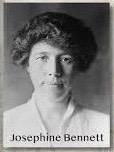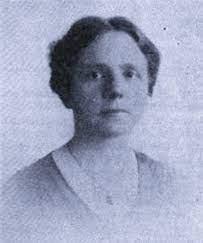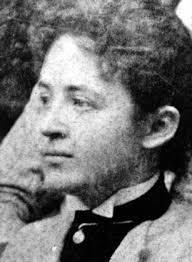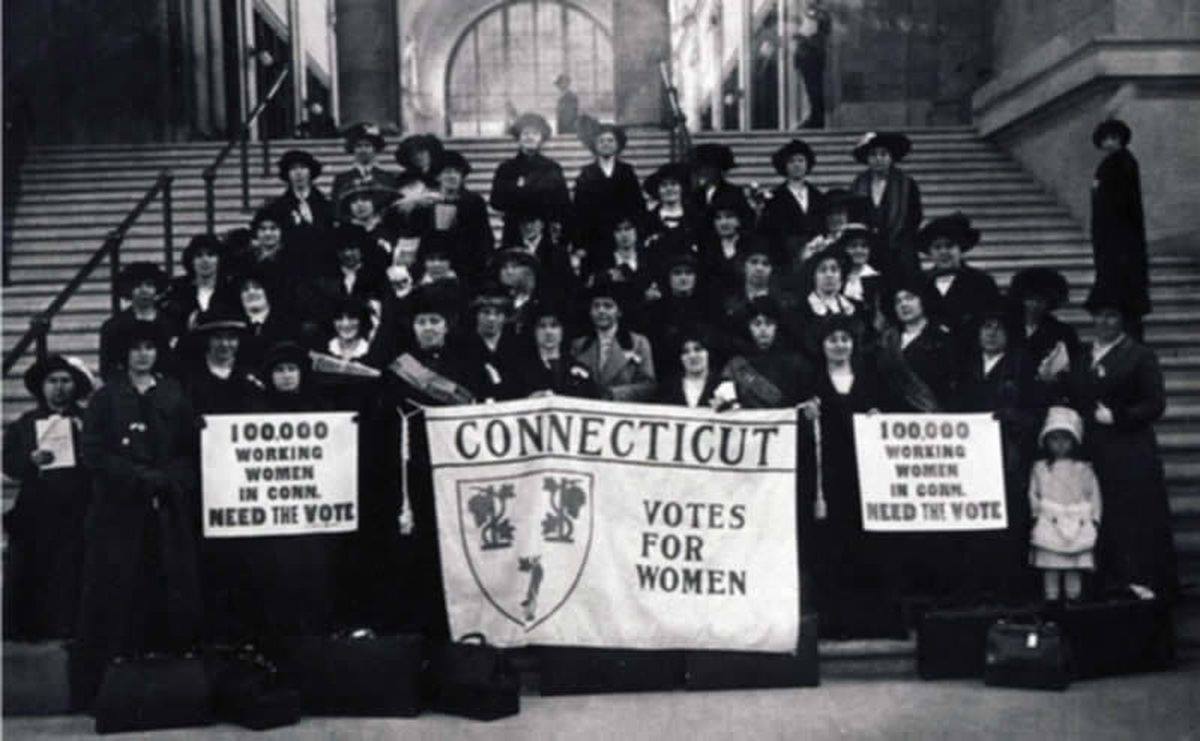
Notable LWVCT Leaders 100 years ago
Read about some of the women who led the suffrage movement in the early 20th Century, and watch the LWVCT's 90th Anniversary Special: "Marching in Their Footsteps", below.
Katherine Ludington
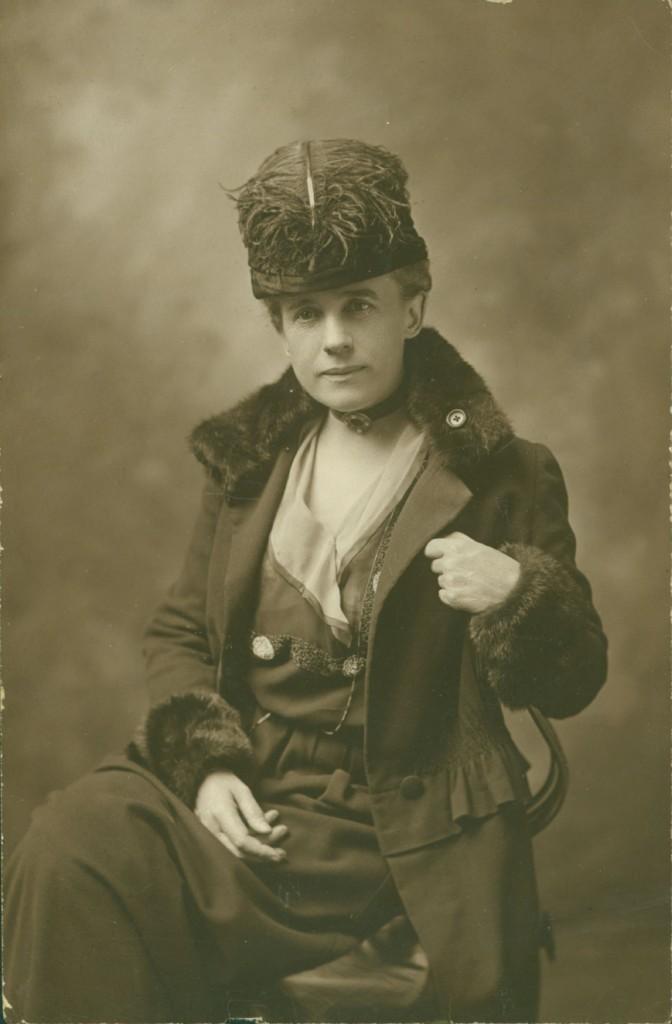 The Connecticut Woman Suffrage Association’s efforts were essential to and recognized by the national movement. In Elizabeth Cady Stanton’s History of Woman Suffrage (Volume V: 1900-1920), we learn that “Connecticut women made a magnificent campaign” for adoption of the Federal amendment when it first came before the State legislature, where it failed by only one vote in the Senate after passing in the Congress. “The strength displayed by the suffragists, the obtaining of 98,000 women’s signatures and the dignity and ability shown under the leadership of Miss Katherine [sic] Ludington, so advanced suffrage in that State as to make the battle seem a victory rather than a defeat.” Though woman suffrage efforts in Connecticut may have been defeated in their wish to be that deciding 36th state ratification, they won the day by not relenting until that successful September 14 vote. Ludington was a founding member of the Old Lyme Equal Suffrage League in 1914, and president of the Connecticut Woman Suffrage Association from 1918 until it disbanded in 1921, succeeding Katharine Houghton Hepburn. In 1917 she spoke at a suffrage event in Washington, D.C. She created a library of women's works at the Old Lyme Inn, and held a suffrage study group in her home. Despite her vigorous efforts, Connecticut did not ratify the Nineteenth Amendment until after it became part of the United States Constitution in 1920.
The Connecticut Woman Suffrage Association’s efforts were essential to and recognized by the national movement. In Elizabeth Cady Stanton’s History of Woman Suffrage (Volume V: 1900-1920), we learn that “Connecticut women made a magnificent campaign” for adoption of the Federal amendment when it first came before the State legislature, where it failed by only one vote in the Senate after passing in the Congress. “The strength displayed by the suffragists, the obtaining of 98,000 women’s signatures and the dignity and ability shown under the leadership of Miss Katherine [sic] Ludington, so advanced suffrage in that State as to make the battle seem a victory rather than a defeat.” Though woman suffrage efforts in Connecticut may have been defeated in their wish to be that deciding 36th state ratification, they won the day by not relenting until that successful September 14 vote. Ludington was a founding member of the Old Lyme Equal Suffrage League in 1914, and president of the Connecticut Woman Suffrage Association from 1918 until it disbanded in 1921, succeeding Katharine Houghton Hepburn. In 1917 she spoke at a suffrage event in Washington, D.C. She created a library of women's works at the Old Lyme Inn, and held a suffrage study group in her home. Despite her vigorous efforts, Connecticut did not ratify the Nineteenth Amendment until after it became part of the United States Constitution in 1920.
Ludington continued to be active in civic leadership, and in 1922 became the first New England director of the League of Women Voters (LWV). She was also head of the LWV's financial committee on the national level, and president of the Connecticut League of Women Voters. She published a pamphlet, "The Connecticut Idea" (1919).
Mabel C. Washburn
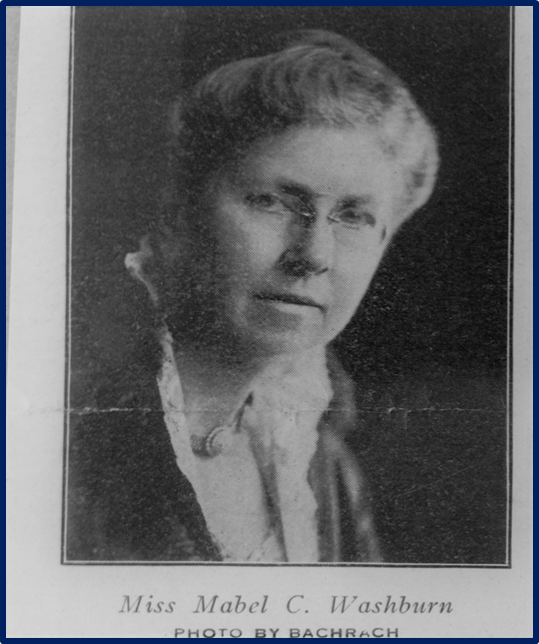 After teaching in Connecticut for more than a decade, Mabel decided to focus her efforts in a different direction: women's suffrage. Mabel proceeded to play a leading role in Connecticut's Women's Suffragist movement.
After teaching in Connecticut for more than a decade, Mabel decided to focus her efforts in a different direction: women's suffrage. Mabel proceeded to play a leading role in Connecticut's Women's Suffragist movement.
In 1921, Miss Washburn, as the chairwoman, organized the State League of Women Voters in Connecticut, which led to the beginning of Connecticut's chapter under the National League of Women Voters. Mabel went on to be the first president elected for the chapter, and ran the league for a year. During this year, the chapter formed seven standing committees, each with their own chairman. When 1921 was coming to an end, Mabel announced that she would not be running for re-election of president of the chapter because she had plans of moving to California for the winter. Despite her plans to move, she was voted Secretary in November of 1922.
Josephine Beach Day Bennett
Josephine Beach Day was born in Hartford, Connecticut to prominent suffragist Katherine Beach. Josephine was the oldest of five children and the only girl in the family.
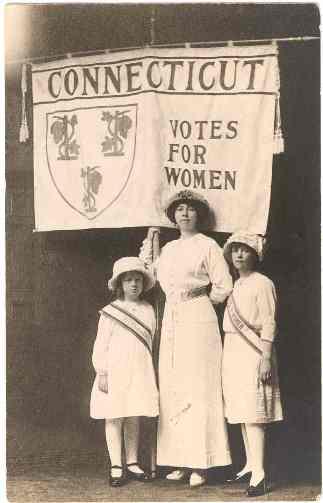 As a child, Josephine lived next door to Katherine Houghton Hepburn in Hartford and the two families worked in tandem to improve the lives of women not only Hartford, but in all of Connecticut.
As a child, Josephine lived next door to Katherine Houghton Hepburn in Hartford and the two families worked in tandem to improve the lives of women not only Hartford, but in all of Connecticut.
After the nineteenth amendment was passed in 1920, Josephine, with her mother and the Hepburns, founded the Connecticut League of Women Voters. This organization encouraged women to register and vote. Afterward, she ran for office in 1921 for the U.S. Senate and Connecticut Attorney-General a year later. Both times she ran on a third-party ticket, the Farmer-Labor Party, and lost in both elections in a Republican-controlled state.
Minnie L. Bradley

Minnie E. Bradley lived in New Haven. She was the first president of the Connecticut branch of the National Association of Colored Women and led the organization for many years. She was a charter member of the state’s League of Women Voters.
Emily Sophie Brown
Emily Sophie Brown altered Connecticut’s history when she became one of the first five women elected to the Connecticut General Assembly in 1920. With the passage and integration of the 19th Amendment, the Republican started her long political career in 1921 with her term in the Connecticut state legislature.
She was a resident of Naugatuck. Recounting her time in the legislature in a 1980 interview, Brown recollected that her male counterparts “accepted [her] almost as a partner.” House Speaker Frederick Huxford invited her to take his seat in the Speaker’s Chair, where she temporarily presided—the first woman to do so in Connecticut history, The Norwich Bulletin reported on May 21, 1921.
Brown did not run for reelection. Instead, she was appointed by the Connecticut General Assembly as a county commissioner of New Haven County. In this position, she published “The County Jail in Connecticut” (Journal of Criminal Law and Criminology, 1926), in which she discussed the needs of those in prison.
Brown continued to be active in politics and child welfare, particularly in Naugatuck. She was involved in the League of Women Voters and League of Women Legislators.
Mary Bulkley
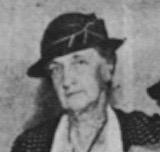
By 1911, Bulkley was active with the Connecticut Woman Suffrage Association (CWSA), an organization for which she would fulfill many roles. She served as an auditor in 1911-1912, and she became Chairman of Hartford County in 1915. Bulkley also served as a member of the CWSA Legislative Committee, Bulletin Committee (responsible for issuing the monthly Suffrage News Bulletin), and Citizenship Committee.
Through these roles, Bulkley deeply contributed to the suffrage cause in Connecticut. She gave speeches and planned educational programs to prepare women to become active citizens, a mission she later continued through the Connecticut League of Women Voters (CLWV).
For years after the passage of the Nineteenth Amendment, Bulkley, indefatigable, remained active with the League of Women Voters (LWV) at multiple levels. Building up on her earlier initiatives, she helped organize multi-day citizenship schools for the CLWV, like the one held at Trinity College in April 1922. The schools offered courses on local, state, federal, and international politics, which Bulkley hoped would instill in their attendees “a sense of the nearness of political questions to their own homes and lives.” She served on the board of directors of the Hartford League of Women Voters, she presided the CLWV in the years 1926-1931, and was regional director for the national LWV in 1930-1934.
Bulkley never married. During a fundraiser at the fifth annual convention of the CLWV, Katharine Houghton Hepburn enjoined everyone to pledge $1 in honor of each of their children, to which Bulkley retorted, with humor, “I haven't any children but I'll pledge $1 for an awfully nice dog of mine!”
Elsie Rowland Chase
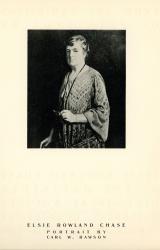
Photograph and artwork of Elsie Rowland Chase courtesy of the Mattatuck Museum.
Elsie established herself, like her father, in Connecticut, studying at the Yale School of the Fine Arts from 1884 to 1889 and exhibiting her paintings and landscapes in New Haven.
In 1918, as chairman of the Women's Committee of the Council of National Defense of Waterbury, she was working to register women on local electoral lists. In 1926, she was Chairman of the Connecticut League of Women Voters' International Cooperation Committee.
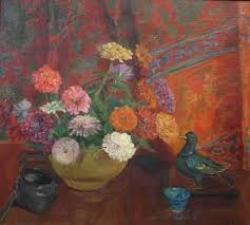 Through her marriage, Elsie became sister-in-law with Elizabeth Hosmer Kellogg Chase, an active anti-suffragist. Elsie was honored in 1934 by the Connecticut League of Women Voters for her contributions to the suffrage cause.
Through her marriage, Elsie became sister-in-law with Elizabeth Hosmer Kellogg Chase, an active anti-suffragist. Elsie was honored in 1934 by the Connecticut League of Women Voters for her contributions to the suffrage cause.
Art remained an important part of Elsie Rowland Chase's life. In 1918, she was on the Mattatuck Historical Society Meetings Committee, and several of her paintings are held in the historical society's collections.
Sara Buek Crawford
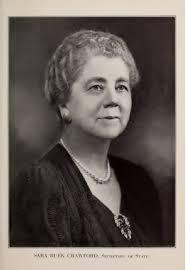
In 1912, this daughter, wife, and mother ventured out from her parlor to campaign for “Votes for Women” with the Connecticut Woman Suffrage Association (CWSA) in Westport and across the state.
In 1924, Sara Crawford made local history when she won at the polls as the first female state representative for Westport, a seat she filled for six terms (1925-1927; 1931-1937). More momentous, in 1938, she entered the state annals as the first female statewide elected official and first female Secretary of State (1939-41). Moments after being sworn in on January 4, 1939, Secretary of State Crawford made history again as the first woman delivering the oath of office to a Connecticut governor (Raymond E. Baldwin-R).
Crawford joined the Republican party and League of Women Voters and helped educate new voters on the machinery of government and dynamics of voting.
Rosamund Danielson
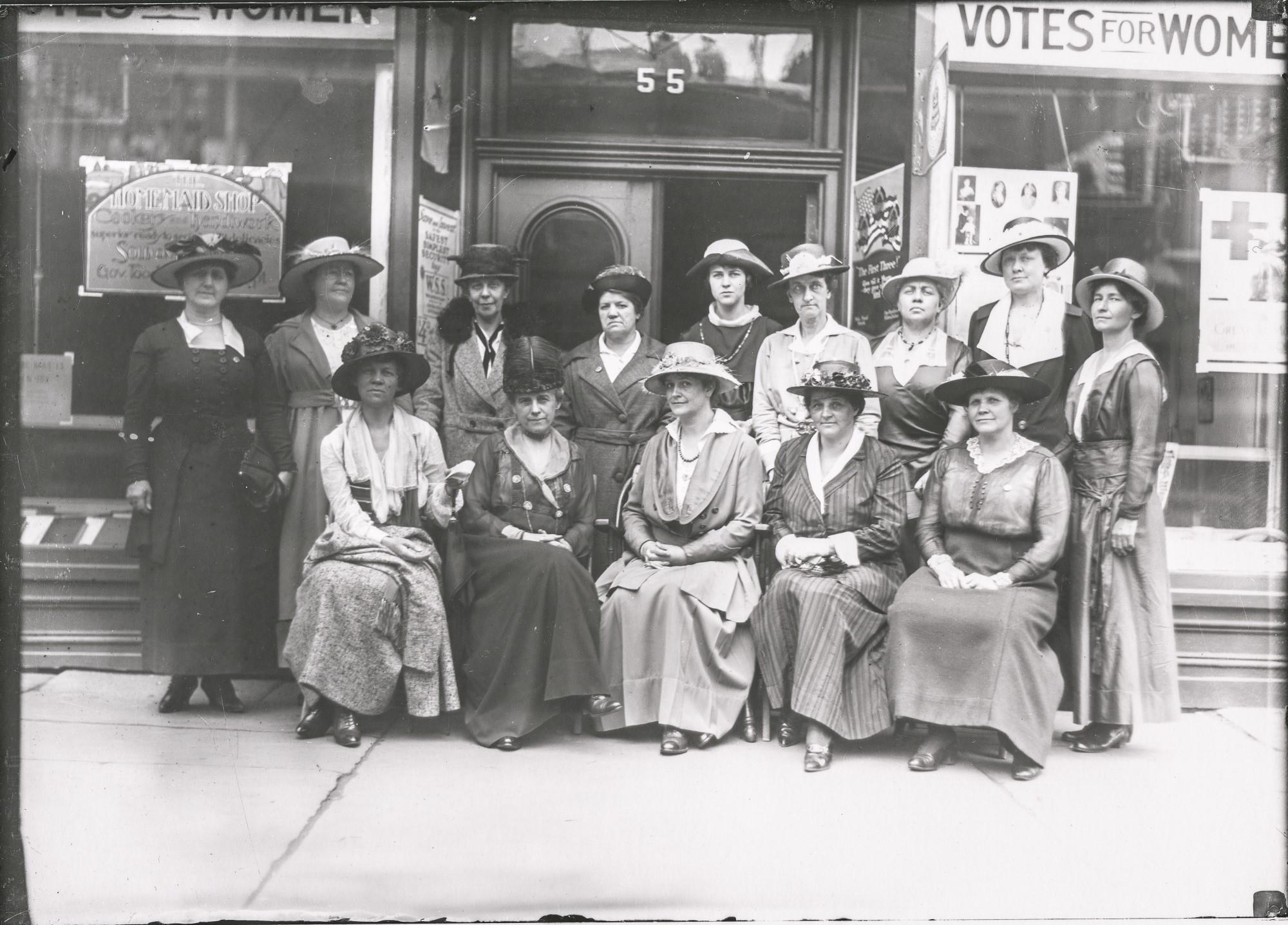 Rosamund Danielson (far right)
Rosamund Danielson (far right)
Her suffrage activism started around early 1913 when she and other local women were inspired to take up the women's rights cause after hearing the presentations of Connecticut Woman Suffrage Association (CWSA) organizer, Emily Pierson, who was touring the Northeastern corner of the state. That year, Danielson was elected as secretary of the new Putnam Equal Franchise League and later as Windham County Chairman of the CWSA. As a state and local suffrage leader, Danielson contributed to many campaigns for women's right to vote.
In 1920, Danielson organized a 3-day long suffrage institute in Willimantic under the direction of the citizenship department of the CWSA to teach women about how the government worked and the practice of casting a ballot.
Frustrated with the unrelenting political opposition to women's suffrage in Connecticut, she and her supporters from the Windham area crossed the border to help activists in Southbridge and Webster in a local trolley campaign and state ratification drives. Danielson, like many Connecticut activists, gave suffrage speeches in New York State, when summoned by neighboring allies. After the passage of the Nineteenth Amendment, Danielson became the president of the newly organized Putnam Civic club, which carried out the work of the Connecticut League of Women Voters on a grassroots level.
Sarah Lee Brown Fleming
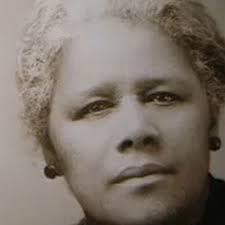
In the aftermath of the passing of the 19th amendment, Fleming continued her suffrage work in New Haven's 19th Ward. While the League of Women Voters struggled to eliminate white supremacy within its ranks, the interracial membership of the 19th Ward section made it a standout. Fleming hosted League meetings in her home at 216 Dwight Street and served on the executive board as secretary, alongside her colleague Laura Belle McCoy. Voter education was her priority.
Sally Fanny Gleaton
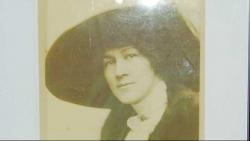 Gleaton was a trailblazer of the women’s rights movement. “She spoke at many lectures and stressed the importance of the registration of potential female voters.” Gleaton challenged her audiences with the line, “It is the duty of every woman here to see that every other woman registers.”
Gleaton was a trailblazer of the women’s rights movement. “She spoke at many lectures and stressed the importance of the registration of potential female voters.” Gleaton challenged her audiences with the line, “It is the duty of every woman here to see that every other woman registers.”
Gleaton worked with leading suffragettes in New York, Connecticut, Massachusetts and Oklahoma to secure women’s voting rights. During most of the 1920s, she served in Connecticut as field secretary for the League of Women Voters.
Edith Hastings
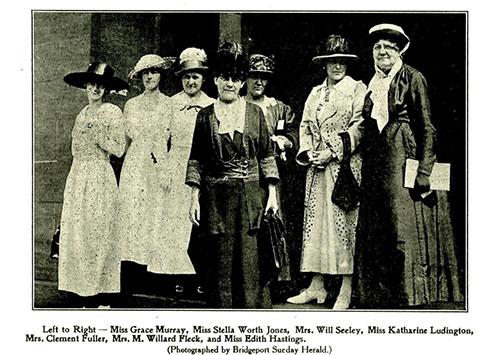
Edith Hastings was an active member of the Stratford Woman Suffrage Association (SWSA). Fellow suffrage activist, Maude Hull, described Hastings as “perhaps the most prominent” champion of women's suffrage in Stratford. According to another fellow activist, Laura Lay, Edith Hastings and the other members of the SWSA spent long hours going house to house with petitions. They also argued their cause to attendees at county fairs and before the state legislature. Lay described Hastings as one “never to be forgotten for her devotion, seldom holding office but always a power and drive behind those who had to do the difficult jobs.”
In 1915, Edith Hastings was appointed to the credentials committee of the Connecticut Woman Suffrage Association (CWSA). Hastings assisted the CWSA with their two main objectives: completion of a petition campaign and deputations to candidates for political office. In 1918, she participated in a signature campaign the CWSA hoped would furnish “uncontestable statistics to meet and offset the familiar and oft repeated refrain, ‘the women of Connecticut do not want to vote.'” The same year, Hastings was part of a deputation of women who questioned candidates running for state and county offices. The Bridgeport Sunday Herald took a picture of members of this group, with Edith Hastings, as they pushed Republican candidate for Lieutenant-Governor Clifford B. Wilson on his party's stance regarding the federal amendment for women's suffrage. The Bridgeport Times placed Edith Hastings at the center of their front page. The Times informed its readers that Hastings, along with fifty Connecticut suffragists, were pressing their case for women's suffrage before Senator George P. McLean.
In 1924, Hastings was elected Director-at-Large for Connecticut's League of Women Voters (CLWV), which educated women about pertinent political issues and encouraged them to use their newly acquired right to vote.
In November 1925, The Stratford League of Women Voters (SLWV) planted an oak tree and placed a plaque on Academy Hill in honor and memory of Edith Hastings.
Kate Campbell Hurd-Mead
Hurd-Mead moved to Connecticut in 1893 and continued to work in Middletown. She became the consulting gynecologist at the hospital from 1907 until 1925. In this period, she joined the Connecticut Woman Suffrage Association and the Connecticut League of Women Voters. During World War I she served as a member of the Connecticut State Council of Defense.
In addition to being the consulting gynecologist, Hurd-Mead helped organize the Middletown District Nurses Association, became vice president of the State Medical Society of Connecticut, president of the American Medical Women's Association, and organizer of the Medical Women's International Association. She was devoted to all of these causes and worked tirelessly until retirement in 1925.
Julia M. Hinaman
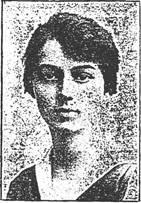 Hinaman moved to Hartford, Connecticut where she boarded at the home of fellow suffragist Mary Bulkley. She joined the staff of the National American Woman Suffrage Association (NAWSA), for whom she did political organizing and served as publicity director. Additionally, she served as the Connecticut Circulation Chairman and wrote articles tracking the progress of suffrage legislation in Connecticut for NAWSA's official periodical The Woman Citizen.
Hinaman moved to Hartford, Connecticut where she boarded at the home of fellow suffragist Mary Bulkley. She joined the staff of the National American Woman Suffrage Association (NAWSA), for whom she did political organizing and served as publicity director. Additionally, she served as the Connecticut Circulation Chairman and wrote articles tracking the progress of suffrage legislation in Connecticut for NAWSA's official periodical The Woman Citizen.
After passage of the Nineteenth Amendment, Hinaman wrote an article detailing the transition of the CWSA to a Connecticut branch of the National League of Women Voters (NLWV). To finance the association's outstanding financial obligations before its dissolution, she served as auctioneer of suffrage novelties at the final annual convention of the CWSA in November 1920. Hinaman then became the chairman of publicity for the NLWV in Washington, D.C. Her duties included preparing press materials for regional conferences and national conventions and tracking federal legislation relevant to women voters. Hinaman also testified before the House of Representatives Committee on Education, representing the position of the NLWV on the Fess-Capper physical education bill.
From 1922 to 1927, Hinaman lectured as a representative of the Connecticut Children's Aid Society on the subject of “What Connecticut Owes its Children.” Around this time, Hinaman also served as educational director in charge of the junior and publicity departments at the Chautauqua community in New Haven, Connecticut. In 1926, Hinaman became the head of publicity and advertising for the Connecticut League of Women Voter's Bulletin. A 1926 article by Pauline Kronman highlighted Hinaman's prominence as a press agent, a new profession that women were entering “in step with men.” Hinaman further served as the CLWV‘s Business and Advertising manager from September 1926 until her death in 1927.
In 1930, Hinaman was nominated for the NLWV National Roll of Honor as one of the “women famous throughout the country for the work they have done in securing the suffrage for women and in teaching them how to make their citizenship intelligent and effective.” While not ultimately part of the national list, she was included on the Connecticut State Roll of Honor.
Maud Morris Hincks
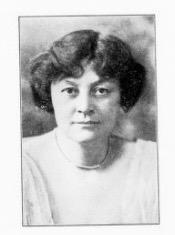
Maud Morris was the president for the Connecticut Woman's Suffrage Association between the years of 1911 and 1913. The 1911 convention was held in Bridgeport, CT and showcased the success of the women involved. The event raised almost four-thousand dollars and about five thousand people were now members of the association. That year the organization had been successful at collecting names for a suffrage petition that called upon Legislature to make changes. They managed to cover all but one county in the state of Connecticut and received about 18,000 signatures.
Morris made important contributions to women's suffrage at both town and state levels and helped to organize new women voters after 1920. She spoke at conventions and meetings, sent out campaigners, helped to keep the press interested, established a Bridgeport women's group, and was an active member of the Young Women's Christian Association. In 1920, Morris along with several other activist women hosted a statewide meeting of Democratic women to discuss voting rights.
Laura Belle Reed McCoy
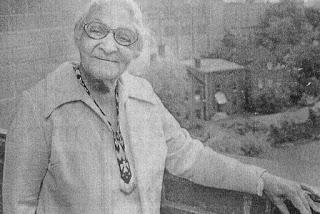
Laura Belle Reed McCoy was a Native American who established the first black Girl Scout troop in New Haven, Troop #24, in 1928. McCoy broke many barriers herself, being the first minority woman in the United States elected to a city council. She served on the executive board of the League of Women Voters in the 19th Ward New Haven.
Valeria Hopkins Parker
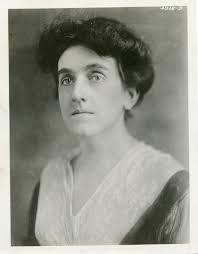
Valeria Hopkins Parker was an American physician and suffragette. A governor appointee as director of the Connecticut State Farm for Women (1919), she was the first "woman policeman ever to be given supervision over state policemen in the US", these being policewomen who supervised girls in the New London, Connecticut area.
She was active in the national League of Women Voters and interested in anything pertaining to the welfare of women and children. She favored woman suffrage and was a member of the Greenwich Equal Franchise League, which was founded at her home in August 1909. She served as Press chairman of the Connecticut Woman Suffrage Association. Among her other achievements, she was also the Executive Secretary of the US Interdepartmental Social Hygiene Board.
Annie G. Porritt
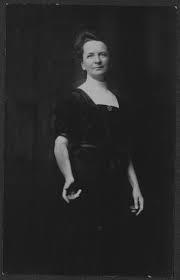
In 1915, a populist campaign designed not to win votes, but to forestall votes – votes by women, that is – was exposed by the New Republic to the great delight of Connecticut Suffragists. The woman who explained the ruse to the Connecticut public was Annie G. Porritt, a leading feminist and intellectual, whose regular bimonthly column [c. 1913-1916] in the Bridgeport Evening Farmer faithfully gathered the suffrage campaign news of the state and artfully deconstructed whatever anti-suffrage propaganda offensive was underway.
She served as vice-president of the Hartford League of Women Voters, circa 1920s to 1932. She gave lectures on social problems and parliamentary law, and wrote articles on birth control and suffrage for the Birth Control Review.
Amelia Ely Scranton Taylor
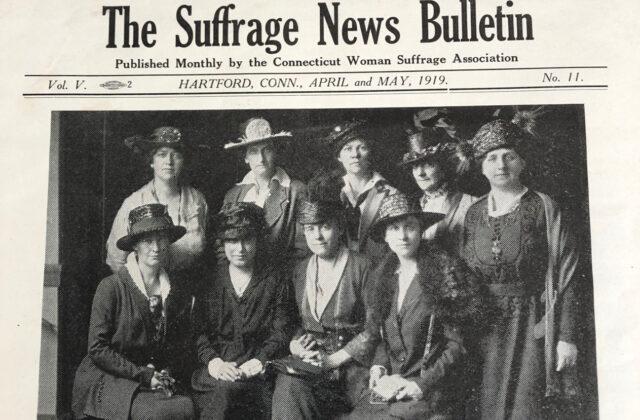
In the picture above, Mrs. Amelia Taylor of Norfolk is in the front row, second from the left.
In 1916, Taylor served as the chair of Congressional Work for the CWSA and made sure that Connecticut was well represented in Chicago at the suffrage parade scheduled to coincide with the Republican National Convention, where suffragists planned to demand that a "suffrage plank" be added to the party's platform. As more state legislatures passed women's suffrage laws, Taylor focused on convincing members of the Connecticut General Assembly to allow the people of Connecticut to vote on women's suffrage. As chair, Taylor was also responsible for garnering support across the state for the national Susan B. Anthony Amendment.
A member of the Connecticut League of Women Voters, Taylor was among 27 Connecticut women chosen to have their names inscribed on the state honor roll of the national headquarters of the League of Women Voters in 1931.
Edna L. Tyler
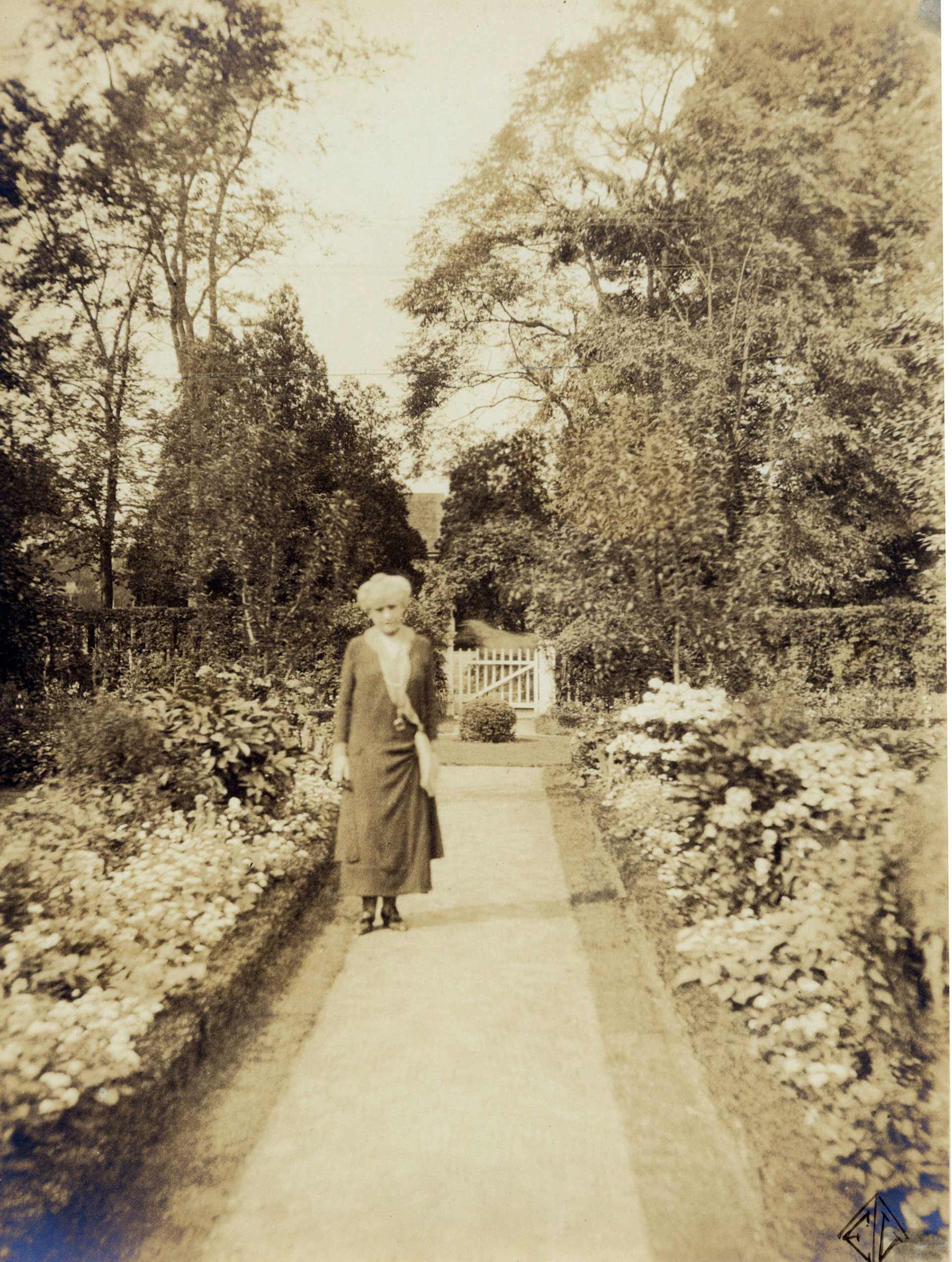
Photo of Katherine Ludington taken by Edna Leighton Tyler courtesy of Griswold Museum.
Edna Leighton Tyler was born in Norwich, Connecticut. After living in Washington DC and New York City, Tyler made New London, CT her home. Tyler did not marry or have children.
In the 1910s, Tyler dedicated her time to the suffrage cause. She acted as the New London County Chairman for the Connecticut Woman Suffrage Association until 1920, and as president of the New London Equal Franchise League.
After the right to vote was won, Tyler remained deeply engaged with the League of Women Voters. At the state level, she was Director-at-large on the Connecticut LWV executive board throughout the 1920s and 1930s. Her home at 36 Gardner Avenue, New London served as one of the board's meeting places. Locally, she founded the New London LWV and kept it under her leadership for no fewer than 45 years.
To honor her extensive work with the League of Women Voters, the New London LWV established the Edna L. Tyler Award recognizing students of Mitchell College, New London "demonstrat[ing] an awareness of the principles of self-government established in the Constitution of the United States and an interest in the promotion of political responsibility through informed and active participation of citizens in government." Even in advanced age, Tyler bestowed that award in person to the recipient.
Josepha Whitney
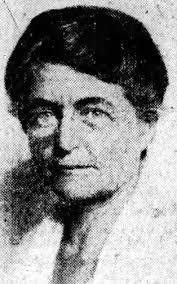
The early 1910s marked the beginnings of Whitney's involvement in the suffrage movement at local, state, and national levels. In 1912, she led the first suffrage meeting in the town of Cornwall, CT and, the following year, she travelled to Hartford to plead the cause to state legislators on behalf of the Connecticut Woman Suffrage Association (CWSA). Whitney eventually served as the New Haven County CWSA chair. She later also presided over the New Haven League of Women Voters.
For Whitney, suffrage activism was part of a lifetime of advocacy. During World War I, and in its aftermath, her commitment to women's suffrage intersected with peace activism. Whitney advocated for “woman suffrage as a peace measure” because the “peace-loving half of the people [would gain] a voice in questions of militarism, commercialism and arbitration,” as she put it in a letter to the editor published in The Survey in 1914. Additionally, the meeting minutes of the New Haven Political Equality Club, renamed the New Haven League of Women Voters in 1920, show Whitney raising awareness and support for the League of Nations. She even hosted the first meeting of the Connecticut League of Nations Association in 1924 in her New Haven home.
Following the ratification of the 19th amendment, Whitney herself sought political office. After having been designated as New Haven Mayor David E. Fitzgerald's alternate for the Democratic National Convention of 1920, Whitney launched her own campaign for a state house seat in 1922. Her ensuing loss did not discourage her from running for office again a decade later. She was successfully elected to the Connecticut House of Representatives in 1932 as the Democratic Party candidate for New Haven. During her term of office, Whitney continued her advocacy for women's rights, adding her voice in favor of a bill to include women in juries, which passed in 1939.
--------------------------------------------------------------------
Take a journey through time with this 90th Anniversary Special: "Marching in Their Footsteps" by Elisa McCarthy and Carole Mulready of the League of Women Voters of Connecticut.
